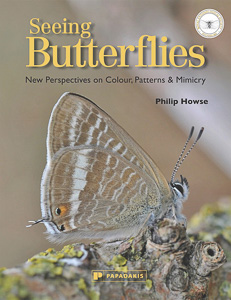 |
| Front Cover |
Professor Philip Howse has published several books and numerous research articles on insect behaviour and ecology. He has developed novel environmentally-friendly methods for the control of insect pests, recognised by a number of awards including the OBE. After a career spent mainly at Southampton University, he has now retired but continues writing about the insects that have fascinated him since he was a boy.
See living butterflies and moths with new eyes through Philip Howse's fascinating text and superb imagery. Understand the reasons for the enchanting colours and designs on their wings, and their varied and intriguing survival strategies of behaviour, mimicry, and camouflage.
Insect predators such as birds see a greater range of colours than we do and focus on details rather than whole objects. Engraved on the wings of many butterflies and moths, among the rainbow colours and the opalescence, are images that closely resemble millipedes, salamanders, frogs, snakes, falcons, spiders, hornets, bats, large canine teeth, claws, caterpillars, wolves, and owls.
Philip Howse explains how these colours and designs have evolved and how the insects are protected by such camouflage, mimicry and deception. Separate chapters are devoted to commonly seen groups of butterflies, such as whites, admirals, emperors, monarchs, swallowtails, blues and morphos, peacocks and passion vine butterflies as well as hawkmoths and giant silkmoths. An appendix provides a simple identification guide to British and European butterflies and to familiar tropical species.
This new way of looking at these beautiful and iconic insects and the superb images will inform and inspire nature-lovers, photographers, artists and scientists.
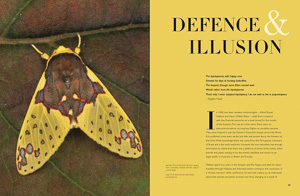 |
Following on from the author's previous works (Messages from Psyche and Giant Silkmoths), Seeing Butterflies continues the trend of providing fascinating and novel insights into our Lepidoptera. As an admirer of both Darwin and Wallace, I often ask myself why a particular feature of a butterfly or moth has evolved and what advantage it provides. Some adaptations are obvious, such as the use of colour to attract a mate and the use of camouflage to avoid predation, but most are not.
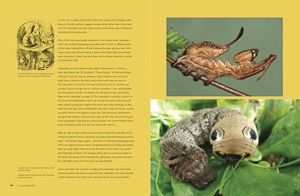 |
Seeing Butterflies does exactly what it says in its subtitle and provides "New Perspectives on Colour, Patterns and Mimicry" in an attempt to provide fresh insights and meaning, especially with regard to features that are subtle, at best, to the human eye. It is therefore only right that the author starts by examining how animals, especially birds (one of the most significant predators of butterflies and moths), differ from us in their perception. The author then introduces the various mechanisms used to evade predators, including the "interpolation of images of parts of another creature on insect wings" which the author refers to as "satyric mimicry". This is all important background for what follows.
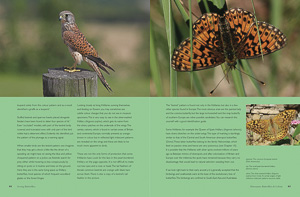 |
And what follows is a vast array of examples of the morphology of both adult insects and immature stages, with explanations of how these provide an advantage, exemplified with a stunning array of photos. I was really blown away with the number of examples given, allowing the author to discuss species found all over the world. I particularly liked the writing style which is anecdote-rich, making for an easy and enjoyable read. I should say that many of the observations made by the author have not been scientifically proven and are, to a degree, a matter of opinion, rather than proven fact. However, this does not diminish the pleasure that you get from reading such a beautiful and well-written work which I highly recommend.
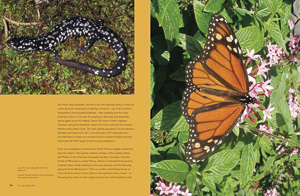 |
Jeremy Thomas sums it up best in the book's foreword: Many hundreds of books about insects are published each year, but it is only once every decade or so that one arrives that takes the breath away, transforming our perception of an apparently familiar subject with fresh ideas, new insights, and unsuspected revelations of beauty. I couldn't agree more.
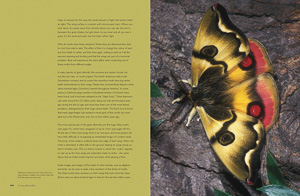 |